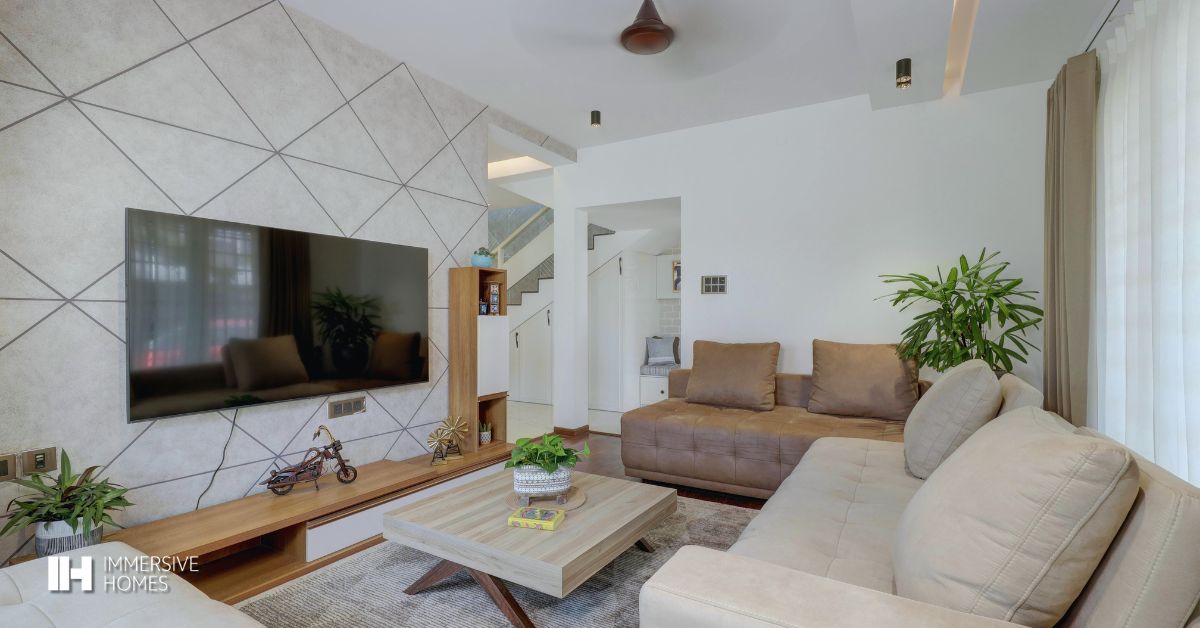
With housing prices and build times rising, many people are exploring prefab living as a practical solution. It appeals to those who want a more efficient home, a smaller footprint, or a quicker move-in schedule.
Prefab homes also often come with built-in energy-efficient features and more predictable construction timelines.
How Small Is a Prefab Home and How Much Space Do You Need?
Most small prefab homes range from 300 to 800 square feet. Some larger models can reach up to 1,500 square feet while maintaining a compact and efficient layout.
How much space you need depends on your lifestyle. A single person or a couple may need much less than a family.
Instead of focusing solely on square footage, prefab living promotes smart space planning. Storage, furniture layout, and multifunctional rooms matter more than the number itself.
Common Design Challenges in Small Prefab Homes
Designing a small prefab space comes with unique challenges:
- Limited storage
- Small or fewer windows
- Shared spaces with overlapping functions
- Poor layout decisions that waste valuable square footage
- Over-customization that slows down production and raises costs
Prefab living works best when the design is intentional. Keeping furniture simple and layouts open can make a space feel larger and more usable.
How Do You Make a Prefab Home Feel More Spacious?
To make the most of a small prefab home, you can:
- Use vertical space with shelves, lofts, and tall cabinets
- Choose light colors and reflective surfaces
- Avoid heavy furniture or large dividers
- Use sliding doors and open floor plans
- Add windows and glass doors to bring in light
- Extend the living space outdoors with a patio or deck
Prefab living is about using every inch efficiently without making the home feel crowded.
Which Floor Plans Work Best in Prefab Homes?
Several floor plan types suit small prefab homes:
1. Studio
One open space combining sleeping, dining, and living
2. One-bedroom
A private bedroom with separate common areas
3. Lofted
Elevated sleeping areas to open up floor space
4. Modular add-ons
Rooms that can be added later if more space is needed
The right floor plan depends on your lifestyle. If you work from home, you may need a dedicated office nook. If you entertain often, a larger kitchen-living area may be better.
What Mistakes Should You Avoid?
Some common mistakes in prefab living include:
- Choosing oversized furniture
- Not planning for storage early
- Ignoring natural lighting
- Forgetting to include outdoor space in your layout
- Not preparing the site before delivery
Good planning makes prefab living smoother and more comfortable. Think ahead and work with experienced builders who understand your needs.
How Much Does Prefab Living Cost?
Costs vary based on:
- Size of the home
- Materials and finishes
- Delivery and setup fees
- Site preparation and utility hookups
- Permits and inspections
Prefab living often costs less than a traditional home, but remember to include all related expenses. Factory-built homes can help avoid some hidden construction fees, but planning and budgeting are still essential.
What Tools Can Help You Plan Your Prefab Home?
Helpful tools for planning prefab living include:
- Online floor plan creators like Room Sketcher
- Virtual tours from prefab companies
- Layout checklists for furniture and storage
- Budget calculators
- City zoning maps and permit guides
Using these tools can save you time and money. They also help you see how your space will function before it’s built.
Is Prefab Living Right for You?
Ask yourself:
- Am I comfortable living in a smaller space?
- Do I want faster build times and lower energy use?
- Can I manage the permit process and site prep?
If you answered yes to most of these, prefab living could be a smart fit. It offers flexibility, comfort, and the opportunity to simplify without compromising quality.
Conclusion
Prefab living is more than a construction trend—it’s a practical, intentional way to live with purpose, efficiency, and design in mind. With the right approach, even a small prefab home can offer comfort, functionality, and personal style.
If you're thinking about making the switch to prefab living or need help designing a small space that fits your goals, contact Immersive Homes to see how we can help you succeed with prefab homes. Our team is ready to guide you through the process and bring your vision to life.
FAQs
What is prefab living?
Prefab living means choosing a home built in sections at a factory and assembled on-site. This approach helps save time and reduce waste while offering a modern housing option.
How long does it take to build a prefab home?
Many prefab homes can be completed in a few months, depending on production schedules and site preparation. This is often faster than traditional construction, which may take a year or more.
Can prefab homes handle harsh weather?
Yes, prefab homes are built to meet local building standards and can be designed for various climates. The key is working with a builder who understands your region’s requirements.
Do prefab homes hold their value?
Prefab homes can retain their value well when built on a permanent foundation and properly maintained. Location, design quality, and market demand also significantly impact resale value.
Is financing available for prefab homes?
Many lenders offer financing for prefab homes similar to standard mortgages. You may need to work with a lender familiar with modular and factory-built housing.